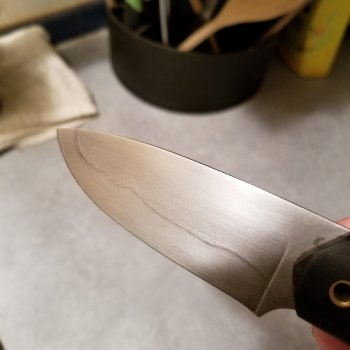If you're referring to a machine/grinder finish to those grits..... no, in fact generally the opposite happens.... scratch marks that were minimally visible before etching will "jump" out, and be 10X more visible.
Now, that being said, a good hand finish is another story.... generally, with 400 grit, unless you hand sand until the paper is so worn out it's slick, the scratches will usually be accentuated by etching. 600 grit will create a smoother finish once etched, provided you pay close attention, and remove ALL of what I call "shadow scratches"....... these are scratches that only become visually evident when you shift the sanded blade around, under a strong light.... and then the surface distortion in the finished surface reveals the "shadow scratches". Whenever I etch any blade, it gets dipped for about a count of 10, withdrawn and examined..... any scratches that need further sanding will be evident. The caution here is to NOT ignore any scratches you see after that initial quick etch.....if left, the etch will only accentuate them.
As a side note to the issue, experience has taught me to steer clear of a buffer for any blade intended to be etched...... trying to buff out scratches usually results in what I call "buffed scratches" look, and even if/when all the heavier scratches are cleaned/cleared, buffing will often result in a "blotchy" look of the etched blade.

